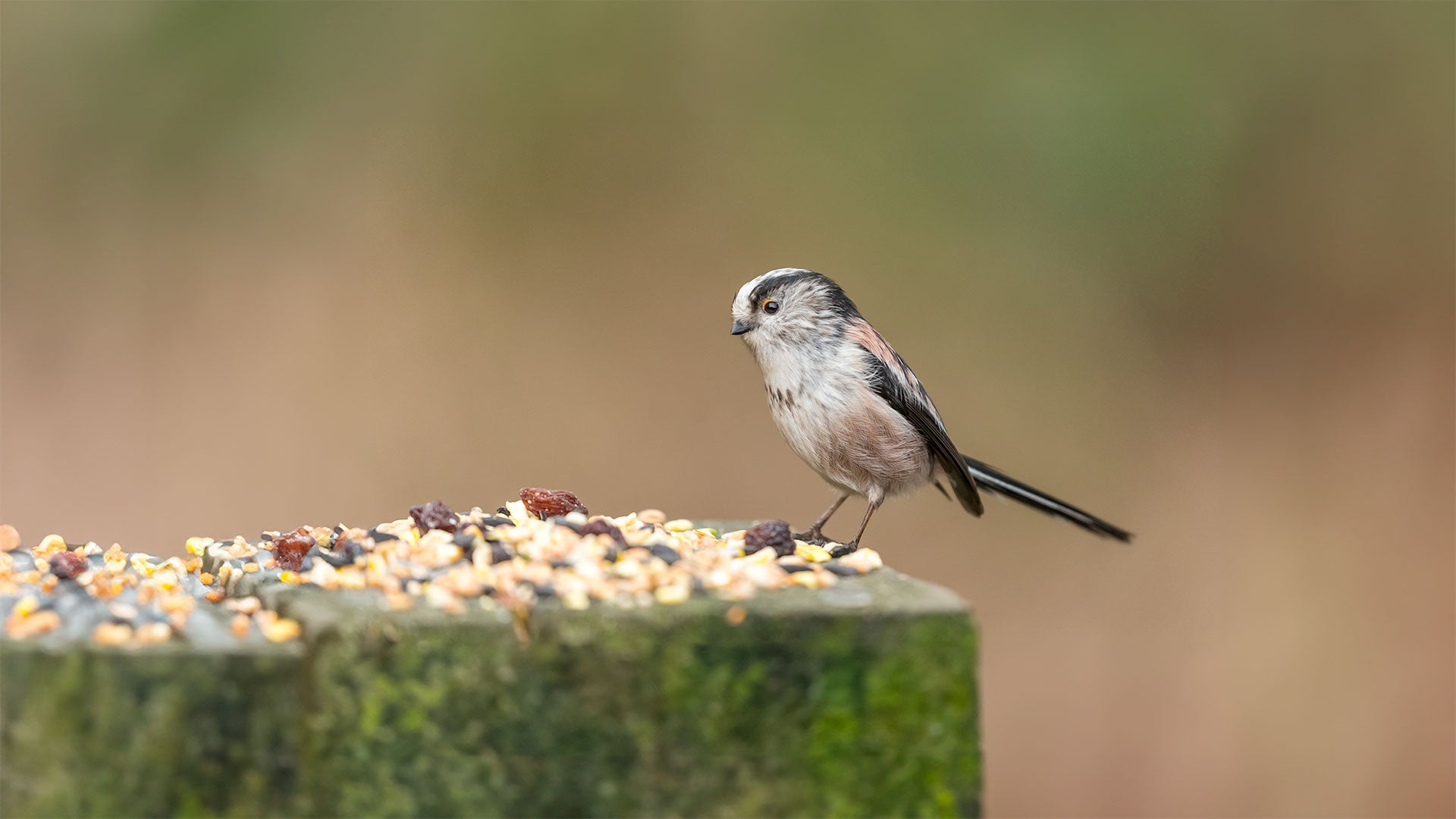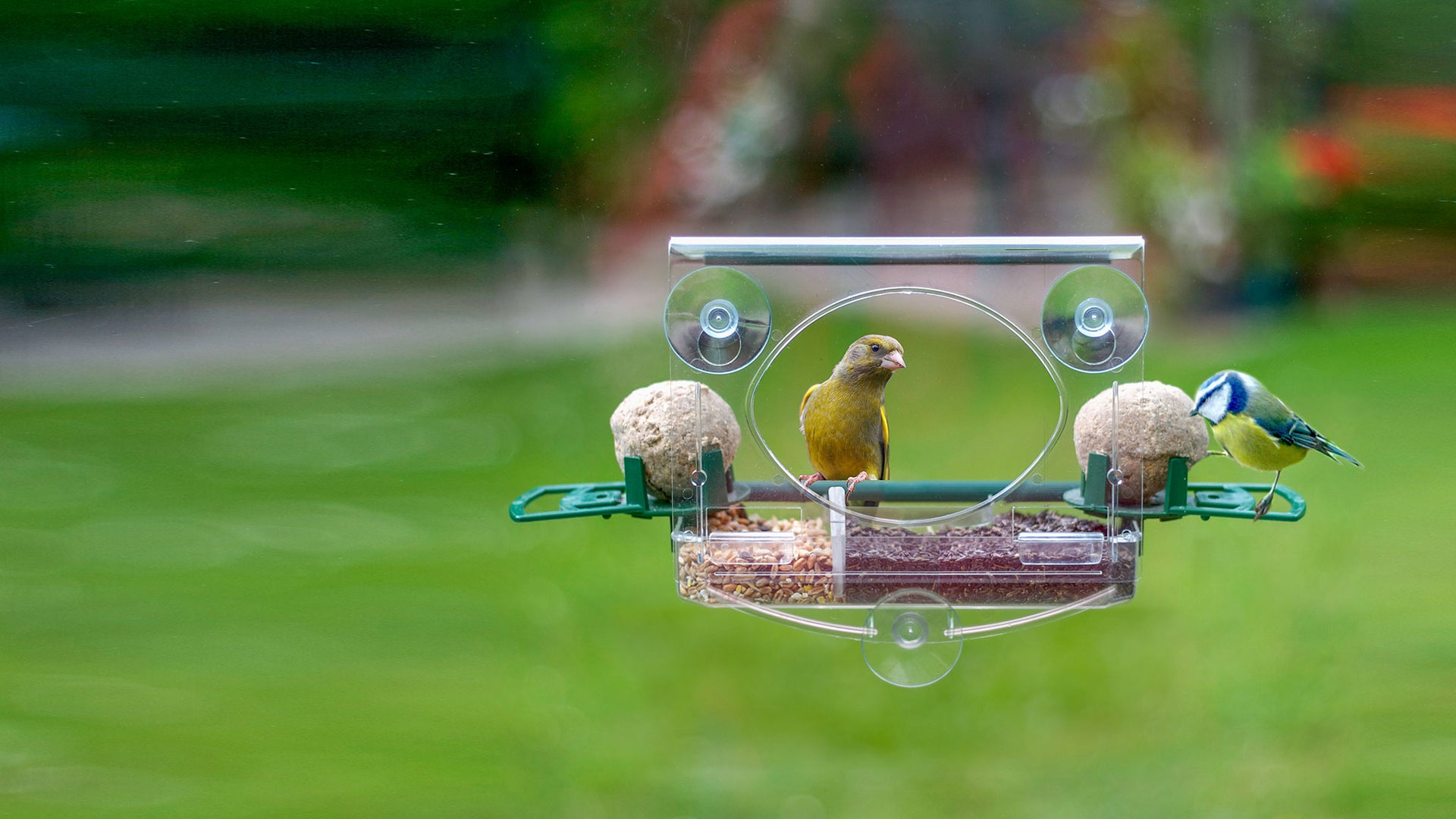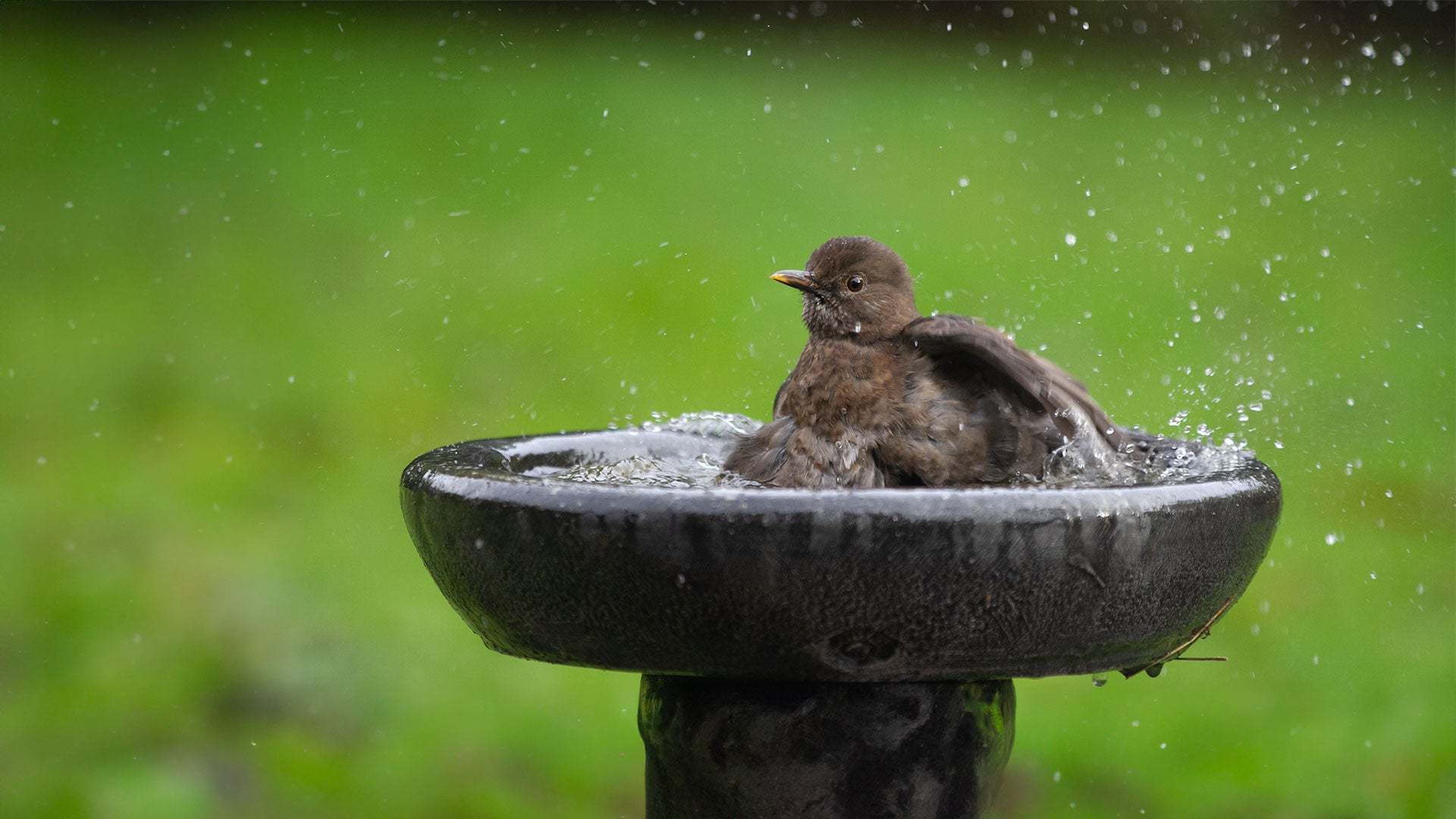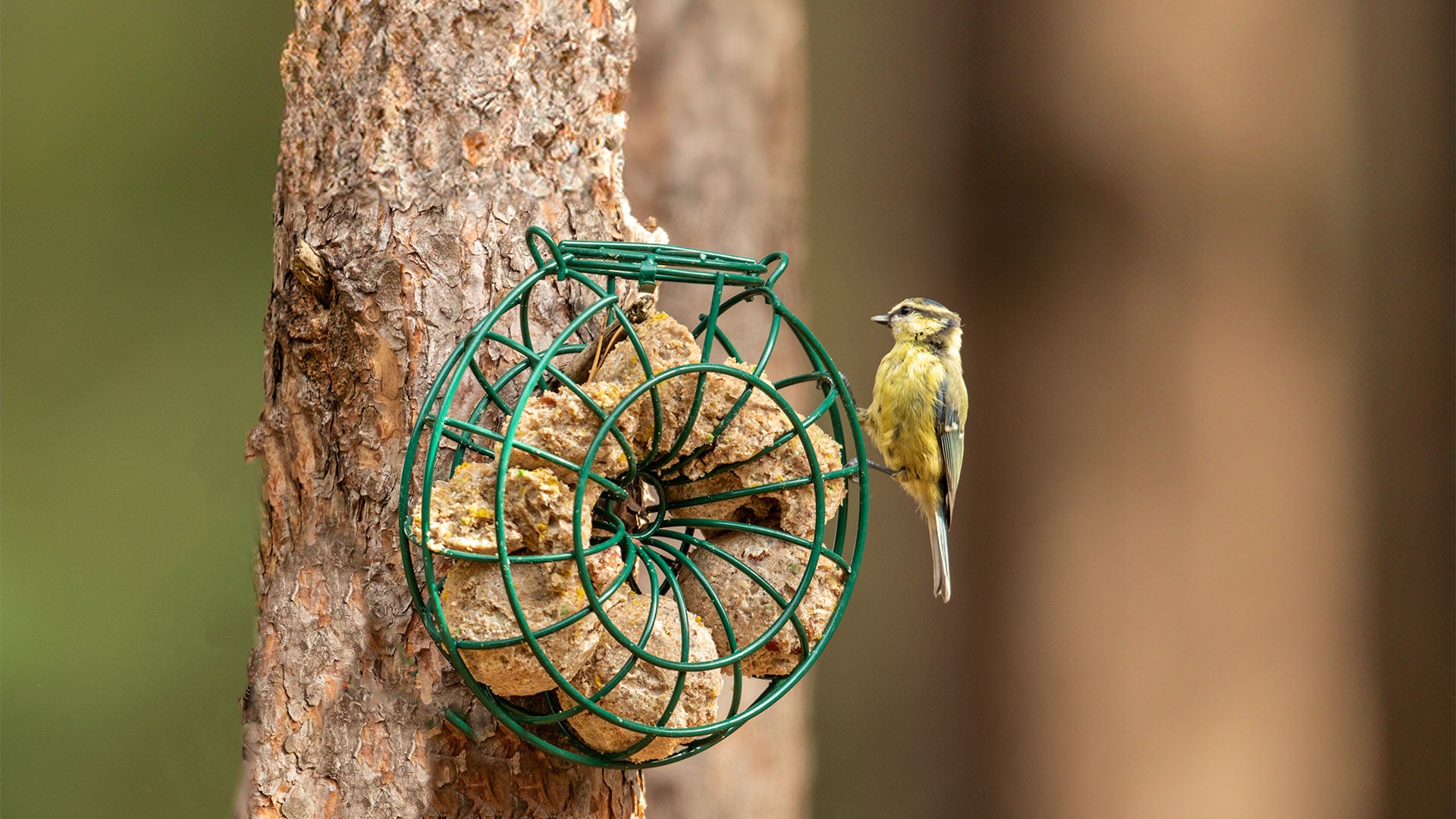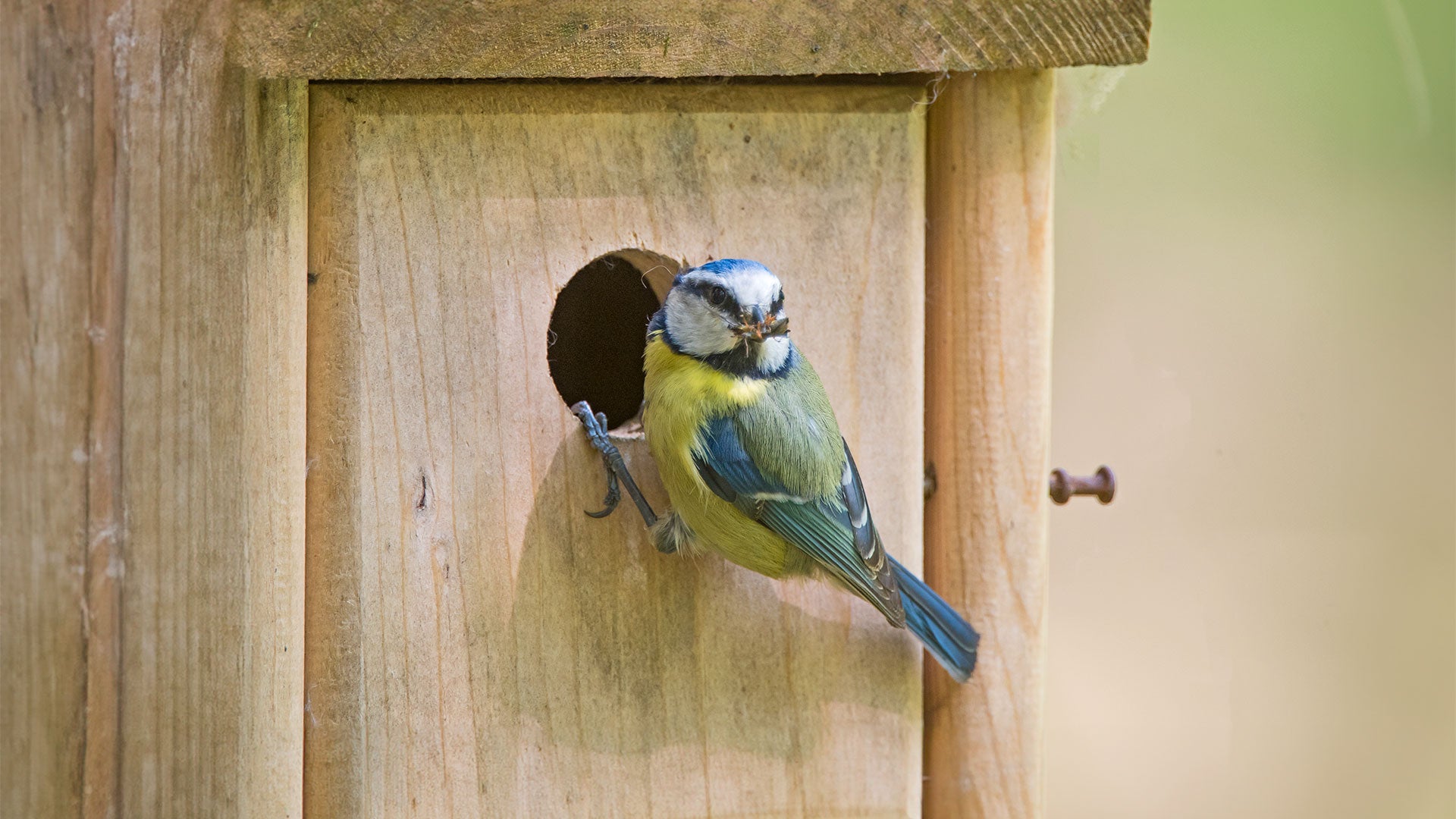Siskin Identification: What does a siskin look like?
Length: 12cm.
The male has a black crown (tipped grey in autumn), and a black chin. Both these features distinguish the Siskin from all other yellow-green finches. The rump, eye stripe, neck and breast are yellowish. They have a yellow wing-bar and a grey-white belly. The outer tail feathers are black and yellow. The female is grey with no black on the head, and whitish streaked under parts. They are distinguished from the Serin at all ages by the yellow patches at the base of the tail.

Siskin call and song
The Siskin emits a ‘tsuu’. Their song is a sweet, musical twittering.
When and where do siskins nest?
Breeding starts from April onwards. They nest high up in trees, usually near the end of a branch. The nest is a small compact cup of twigs, grass and moss, and is lined with hair, wool, feathers and plant down.
Three to five, light blue with brownish, lilac or pinkish spotting, eggs are laid. The female incubates for eleven to fourteen days. Both tend the young which leave the nest after thirteen to fifteen days.
Siskin habitat
Siskins prefer coniferous or mixed woods. They can be found across the UK, but they’re most numerous in Scotland and Wales. During the breeding season, siskins are fairly common in the tops of trees in their natural habitats in Scotland and Wales. You’ll spot them more widely across England in the winter, sometimes visiting garden bird feeders.
What do siskins eat?
Siskins eat mainly seeds but also come into gardens to feed on peanuts in February and March. They extract the seeds from the cones of pine, birch, spruce and alder, and do so with their small, pointed bills. During the summer months, siskins eat insects to supplement their diet. Young birds are also fed insects. Due to the loss of much of their woodland habitat in the UK, they search for food in gardens on bird feeders and tables. They’ll love peanuts, niger seed and sunflower hearts for birds.
Where should you feed siskins?
Feeders – Ideally above 1m in height
Table Feeder – Open topped or covered
Ground – Not suitable

